Transgressions Read online
0-765-30851-7
$27.95 ($36.95 CAN)
New York Times bestselling author Ed McBain has collected ten brand-new, never-before-published novellas from ten of the very best writers of the modern novel. Transgressions is a quintessential classic collection of stories, featuring:
“Walking Around Money” by Donald E. Westlake: The master of the comic mystery is back with an all-new novella featuring hapless crook John Dortmunder, who gets involved in a crime that supposedly no one will ever know happened. Naturally, when something seems too good to be true, it usually is, and Dortmunder is going to get to the bottom of this caper before he’s left holding the bag.
“Hostages” by Anne Perry: The bestselling historical-mystery author has written a tale of the beautiful, yet still savage, Ireland of today. Locked in their struggle for freedom, the Irish Republican Army is about to undergo a changing of the guard. Yet for some, old habits—and honor—still die hard, even at gunpoint.
“The Corn Maiden” by Joyce Carol Oates: When a fourteen-year-old girl is abducted in a small New York town, the crime starts a spiral of destruction and despair as only this master of psychological suspense could write it.
“Archibald Lawless, Anarchist at Large: Walking the Line” by Walter Mosley: Felix Orlean is a New York City journalism student who needs a job to cover his rent. An ad in the paper leads him to Archibald Lawless, and to a descent into a shadow world where no one and nothing is as it first seems.
“The Resurrection Man” by Sharyn McCrumb: During America’s first century, doctors used any means necessary to advance their craft—including dissecting stolen corpses. Sharyn McCrumb brings the South of the 1850s to life in this story of a man who is assigned to dig up bodies to help those who are still alive.
“Merely Hate” by Ed McBain When a string of Muslim cabdrivers are killed, and the evidence points to another ethnic group, the detectives of the 87th Precinct must hunt down a killer before the city explodes in violence.
“The Things They Left Behind” by Stephen King: In the wake of one of the worst disasters on American soil, one man is coming to terms with the aftermath of the Twin Towers—when he begins finding the things they left behind.
“The Ransome Women” by John Farris: A young and beautiful starving artist is looking to catch a break when her idol, the reclusive portraitist John Ransome, offers her a lucrative yearlong modeling contract. But how long will her excitement last when she discovers the fate shared by all of Ransome’s past subjects?
“Forever” by Jeffery Deaver: Talbot Simms is an unusual cop. He’s a statistician with the Westbrook County Sheriff’s Department. When two wealthy couples in the county commit suicide one right after the other, he thinks that it isn’t suicide—it’s murder. And he’s going to find out who was behind it, and how they did it.
“Keller’s Adjustment” by Lawrence Block: Everyone’s favorite hit man is back in MWA Grand Master Lawrence Block’s novella, where the philosophical Keller deals out philosophy and murder on a meandering road trip from one end of America to the other.
Ed McBain is the New York Times bestselling author of the 87th Precinct novels. He has lived in Weston, Connecticut, with his wife, Dragica, for the last five years.
Jacket design by
Drive Communications, New York
A Forge Hardcover
Tom Doherty Associates, LLC
175 Fifth Avenue
New York. NY 10010
www.tor.com
Distributed in Canada by
H. B. Fenn and Company, Ltd.
Printed in the USA
TRANSGRESSIONS
TRANSGRESSIONS
_________________
Edited by Ed McBain
A TOM DOHERTY ASSOCIATES BOOK
NEW YORK
Copyright Acknowledgments
“Walking Around Money,” copyright © 2005 by Donald E. Westlake.
“Hostages,” copyright © 2005 by Anne Perry.
“The Corn Maiden: A Love Story,” copyright © 2005 by The Ontario Review, Inc.
“Archibald Lawless, Anarchist at Large: Walking the Line,” copyright © 2005 by Walter Mosley.
“The Resurrection Man,” copyright © 2005 by Sharyn McCrumb.
“Merely Hate,” copyright © 2005 by Hui Corporation.
“The Things They Left Behind,” copyright © 2005 by Stephen King.
“The Ransome Women,” copyright © 2005 by John Farris.
“Forever,” copyright © 2005 by Jeffery Deaver.
“Keller’s Adjustment,” copyright © 2005 by Lawrence Block.
This is a work of fiction. All the characters and events portrayed in these novellas
are either fictitious or are used fictitiously.
TRANSGRESSIONS
Copyright © 2005 by Hui Corporation
All rights reserved, including the right to reproduce this book, or
portions thereof, in any form.
This book is printed on acid-free paper.
Book design by Mary A. Wirth
A Forge Book
Published by Tom Doherty Associates, LLC
175 Fifth Avenue
New York, NY 10010
www.tor.com
Forge® is a registered trademark of Tom Doherty Associates, LLC.
ISBN 0-765-30851-7
EAN 978-0765-30851-1
ISBN 0-765-31443-6 (Limited Edition)
EAN 978-0765-31443-7 (Limited Edition)
Printed in the United States of America
0 9 8 7 6 5 4 3 2
Contents
INTRODUCTION by Ed McBain
WALKING AROUND MONEY by Donald E. Westlake
HOSTAGES by Anne Perry
THE CORN MAIDEN: A LOVE STORY by Joyce Carol Oates
ARCHIBALD LAWLESS, ANARCHIST AT LARGE:
WALKING THE LINE by Walter Mosley
THE RESURRECTION MAN by Sharyn McCrumb
MERELY HATE by Ed McBain
THE THINGS THEY LEFT BEHIND by Stephen King
THE RANSOME WOMEN by John Farris
FOREVER by Jeffery Deaver
KELLER’S ADJUSTMENT by Lawrence Block
Introduction
When I was writing novellas for the pulp magazines back in the 1950s, we still called them “novelettes,” and all I knew about the form was that it was long and it paid half a cent a word. This meant that if I wrote 10,000 words, the average length of a novelette back then, I would sooner or later get a check for five hundred dollars. This was not bad pay for a struggling young writer.
A novella today can run anywhere from 10,000 to 40,000 words. Longer than a short story (5,000 words) but much shorter than a novel (at least 60,000 words) it combines the immediacy of the former with the depth of the latter, and it ain’t easy to write. In fact, given the difficulty of the form, and the scarcity of markets for novellas, it is surprising that any writers today are writing them at all.
But here was the brilliant idea.
Round up the best writers of mystery, crime, and suspense novels, and ask them to write a brand-new novella for a collection of similarly superb novellas to be published anywhere in the world for the very first time. Does that sound keen, or what? In a perfect world, yes, it is a wonderful idea, and here is your novella, sir, thank you very much for asking me to contribute.
But many of the bestselling novelists I approached had never written a novella in their lives. (Some of them had never even written a short story!) Up went the hands in mock horror. “What! A novella? I wouldn’t even know how to begin one.” Others thought that writing a novella (“How long did you say it had to be?”) would constitute a wonderful challenge, but bestselling novelists are busy people with publishing contracts to fulfill and deadlines to meet, and however
intriguing the invitation may have seemed at first, stark reality reared its ugly head, and so . . .
“Gee, thanks for thinking of me, but I’m already three months behind deadline,” or . . .
“My publisher would kill me if I even dreamed of writing something for another house,” or . . .
“Try me again a year from now,” or . . .
“Have you asked X? Or Y? Or Z?”
What it got down to in the end was a matter of timing and luck. In some cases, a writer I desperately wanted was happily between novels and just happened to have some free time on his/her hands. In other cases, a writer had an idea that was too short for a novel but too long for a short story, so yes, what a wonderful opportunity! In yet other cases, a writer wanted to introduce a new character he or she had been thinking about for some time. In each and every case, the formidable task of writing fiction that fell somewhere between 10,000 and 40,000 words seemed an exciting challenge, and the response was enthusiastic.
Except for length and a loose adherence to crime, mystery, or suspense, I placed no restrictions upon the writers who agreed to contribute. The results are as astonishing as they are brilliant. The ten novellas that follow are as varied as the men and women who concocted them, but they all exhibit the same devoted passion and the same extraordinary writing. More than that, there is an underlying sense here that the writer is attempting something new and unexpected, and willing to share his or her own surprises with us. Just as their names are in alphabetical order on the book jacket, so do their stories follow in reverse alphabetical order: I have no favorites among them. I love them all equally.
Enjoy!
ED MCBAIN
Weston, Connecticut
August 2004
TRANSGRESSIONS
DONALD E. WESTLAKE
_________
It’s an accepted fact that Donald E. Westlake has excelled at every single subgenre the mystery field has to offer. Humorous books such as Sacred Monster and the John Dortmunder series; terrifying books like The Ax, about a man who wants vengeance on the company that downsized him out of a job, and probably Westlake’s most accomplished novel; and hard-boiled books that include the Parker series, a benchmark in the noir world of professional thieves and to which he recently returned to great acclaim; and insider books like The Hook, a twisty thriller about the perils and pitfalls of being a writer. One learns from his novels and short stories that he is possessed of a remarkable intelligence, and that he can translate that intelligence into plot, character, and realistic prose with what appears to be astonishing ease. He is the sort of writer other writers study endlessly; every Westlake novel has something to teach authors, no matter how long they’ve been at the word processor. And he seems to have been discovered—at last and long overdue—by a mass audience. His recent books include The Road to Ruin, the latest novel chronicling the misadventures of inept thief John Dortmunder, and Thieves’ Dozen, a long-awaited collection of the Dortmunder short stories.
WALKING AROUND
MONEY
Donald E. Westlake
1
“Ever since I reformed,” the man called Querk said, “I been havin’ trouble to sleep at night.”
This was a symptom Dortmunder had never heard of before; on the other hand, he didn’t know that many people who’d reformed. “Huh,” he said. He really didn’t know this man called Querk, so he didn’t have a lot to say so far.
But Querk did. “It’s my nerves,” he explained, and he looked as though it was his nerves. A skinny little guy, maybe fifty, with a long face, heavy black eyebrows over banana nose over thin-lipped mouth over long bony chin, he fidgeted constantly on that wire-mesh chair in Paley Park, a vest-pocket park on East 53rd Street in Manhattan, between Fifth and Madison Avenues.
It’s a very nice park, Paley Park, right in the middle of midtown, just forty-two feet wide and not quite a block deep, up several steps from the level of 53rd Street. The building walls on both sides are covered in ivy, and tall honey locust trees form a kind of leafy roof in the summer, which is what at this moment it was.
But the best thing about Paley Park is the wall of water at the back, a constant flow down the rear wall, splashing into a trough to be recycled, making a very nice kind of shooshing sound that almost completely covers the roar of the traffic, which makes for a peaceful retreat right there in the middle of everything and also makes it possible for two or three people—John Dortmunder, say, and his friend Andy Kelp, and the man called Querk, for instance—to sit near the wall of water and have a nice conversation that nobody, no matter what kind of microphone they’ve got, is going to record. It’s amazing, really, that every criminal enterprise in the city of New York isn’t plotted in Paley Park; or maybe they are.
“You see how it is,” the man called Querk said, and lifted both hands out of his lap to hold them in front of himself, where they trembled like a paint-mixing machine. “It’s a good thing,” he said, “I wasn’t a pickpocket before I reformed.”
“Huh,” Dortmunder commented.
“Or a safecracker,” Kelp said.
“Well, I was,” Querk told him. “But I was one of your liquid nitro persuasion, you know. Drill your hole next to the combination, pour in your jelly, stuff the detonator in there, stand back. No nerves involved at all.”
“Huh,” Dortmunder said.
Querk frowned at him. “You got asthma?”
“No,” Dortmunder said. “I was just agreeing with you.”
“If you say so.” Querk frowned at the curtain of water, which just kept shooshing down that wall in front of them, splashing in the trough, never stopping for a second. You wouldn’t want to stay in Paley Park too long.
“The point is,” Querk said, “before I reformed, I’d always get a good night’s sleep, because I knew I was careful and everything was in its place, so I could relax. But then, the last time I went up, I decided I was too old for jail. You know, there comes a point, you say, jail is a job for the young.” He gave a sidelong look at Dortmunder. “You gonna do that huh thing again?”
“Only if you want me to.”
“We’ll skip it, then,” Querk said, and said, “This last time in, I learned another trade, you know how you always learn these trades on the inside. Air-conditioner repair, dry cleaning. This last time, I learned to be a printer.”
“Huh,” Dortmunder said. “I mean, that’s good, you’re a printer.”
“Except,” Querk said, “I’m not. I get out, I go to this printing plant upstate, up near where my cousin lives, I figure I’ll stay with him, he’s always been your straight arrow, I can get a look at an honest person up close, see how it’s done, but when I go to the printer to say look at this skill the State of New York gave me, they said, we don’t do it like that any more, we use computers now.” Querk shook his head. “Is that the criminal justice system for you, right there?” he wanted to know. “They spend all this time and money, they teach me an obsolete trade.”
Kelp said, “What you wanted to learn was computers.”
“Well, what I got,” Querk said, “I got a job at the printing plant, only not a printer. I’m a loader, when the different papers come in, I drive around in this forklift, put the papers where they go, different papers for different jobs. But because I’m reformed,” Querk went on, “and this isn’t the trade I learned, this is just going back and forth on a forklift truck, I don’t ever feel like I done anything. No planning, no preparation, nothing to be careful about. I get uneasy, I got no structure in my life, and the result is, I sleep lousy. Then, no sleep, I’m on the forklift, half the time I almost drive it into a wall.”
Dortmunder could see how that might happen. People are creatures of habit, and if you lose a habit that’s important to you—being on the run, for instance—it could throw off your whatayacallit. Bio-rhythm. Can’t sleep. Could happen.
Dortmunder and Andy Kelp and the man called Querk sat in silence (shoosh) a while, contemplating the position Querk found
himself in, sitting here together on these nice wire-mesh chairs in the middle of New York in August, which of course meant it wasn’t New York at all, not the real New York, but the other New York, the August New York.
In August, the shrinks are all out of town, so the rest of the city population looks calmer, less stressed. Also, a lot of those are out of town, as well, replaced by American tourists in pastel polyester and foreign tourists in vinyl and corduroy. August among the tourists is like all at once living in a big herd of cows; slow, fat, dumb, and no idea where they’re going.
What Dortmunder had no idea was where Querk was going. All he knew was, Kelp had phoned him this morning to say there was a guy they might talk to who might have something to say and the name the guy was using as a password was Harry Matlock. Well, Harry Matlock was a guy Dortmunder had worked with in the past, with Matlock’s partner Ralph Demrovsky, but it seemed to him the last time he’d seen Ralph, during a little exercise in Las Vegas, Harry wasn’t there. So how good a passport was that, after all this time? That’s why Dortmunder’s part of the conversation so far, and on into the unforeseeable future, consisted primarily of huh.
“So finally,” the man called Querk said, breaking a long shoosh, “I couldn’t take it any more. I’m imitating my cousin, walkin the straight and narrow, and that’s what it feels like, I’m imitating my cousin. Once a month I drive up to this town called Hudson, see my lady parole officer, I got nothin to hide. How can you talk to a parole officer in a circumstance like that? She keeps giving me these suspicious looks, and I know why. I got nothin’ to tell her but the truth.”

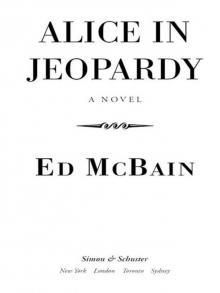 Alice in Jeopardy: A Novel
Alice in Jeopardy: A Novel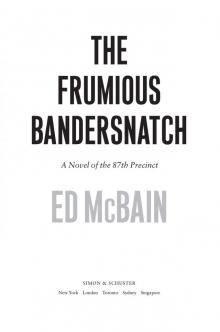 The Frumious Bandersnatch
The Frumious Bandersnatch The McBain Brief
The McBain Brief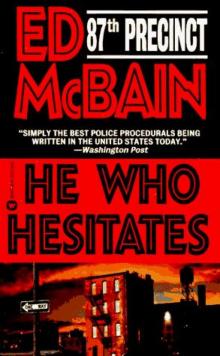 He Who Hesitates
He Who Hesitates Mischief
Mischief Fat Ollie's Book: A Novel of the 87th Precinct
Fat Ollie's Book: A Novel of the 87th Precinct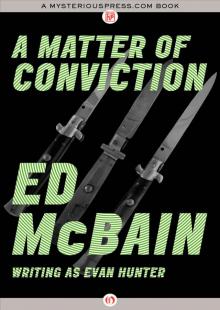 A Matter of Conviction
A Matter of Conviction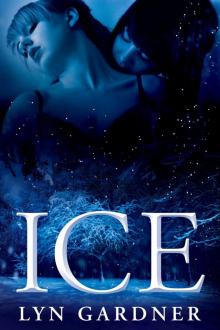 Ice
Ice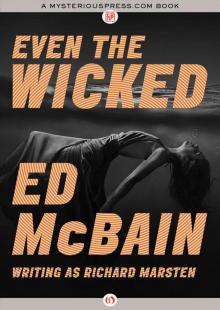 Even the Wicked
Even the Wicked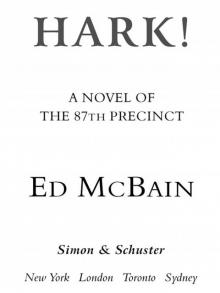 Hark!
Hark!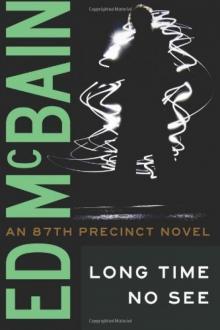 Long Time No See
Long Time No See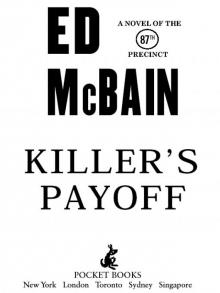 Killer's Payoff
Killer's Payoff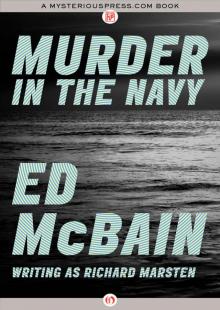 Murder in the Navy
Murder in the Navy A Horse’s Head
A Horse’s Head So Nude, So Dead
So Nude, So Dead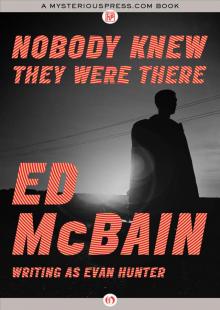 Nobody Knew They Were There
Nobody Knew They Were There Alice in Jeopardy
Alice in Jeopardy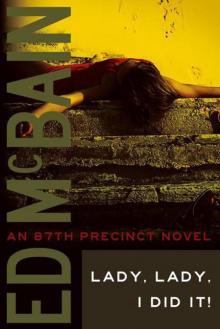 87P14-Lady, Lady, I Did It!
87P14-Lady, Lady, I Did It! Fuzz
Fuzz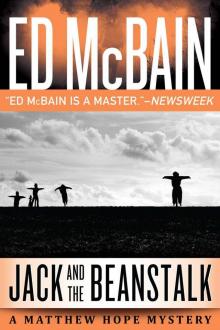 Jack and the Beanstalk (Matthew Hope)
Jack and the Beanstalk (Matthew Hope)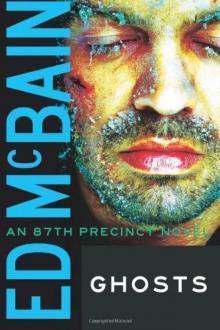 Ghosts
Ghosts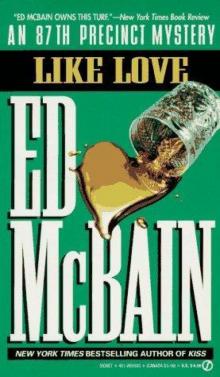 Like Love
Like Love Cut Me In (Hard Case Crime)
Cut Me In (Hard Case Crime)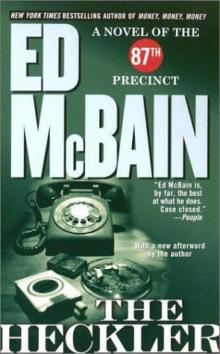 The Heckler
The Heckler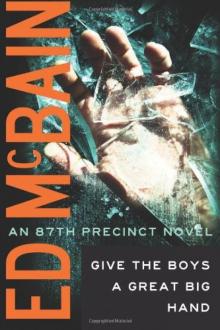 Give the Boys a Great Big Hand
Give the Boys a Great Big Hand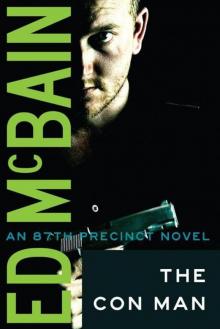 The Con Man
The Con Man Masters of Noir: Volume One
Masters of Noir: Volume One Money, Money, Money
Money, Money, Money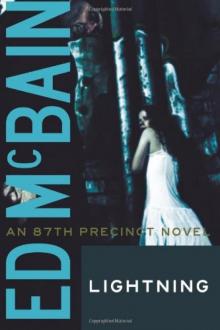 Lightning
Lightning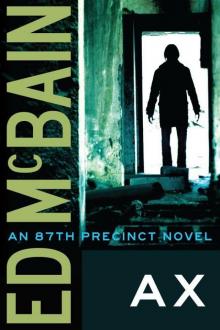 Ax
Ax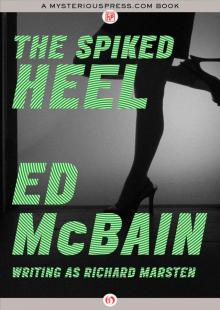 The Spiked Heel
The Spiked Heel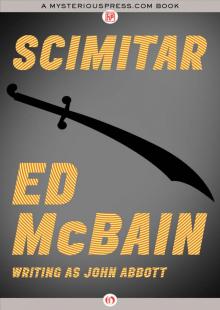 Scimitar
Scimitar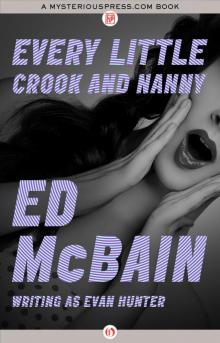 Every Little Crook and Nanny
Every Little Crook and Nanny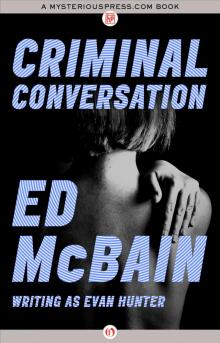 Criminal Conversation
Criminal Conversation Doors
Doors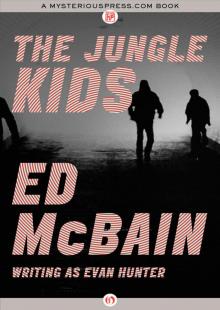 The Jungle Kids
The Jungle Kids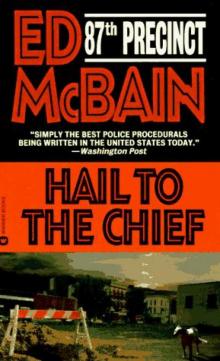 Hail to the Chief
Hail to the Chief Pusher
Pusher Killer's Choice
Killer's Choice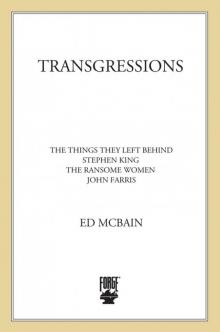 Transgressions Volume 2
Transgressions Volume 2 King's Ransom
King's Ransom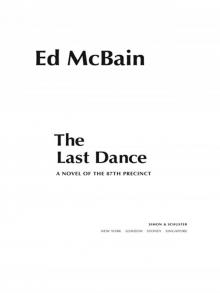 The Last Dance
The Last Dance Fiddlers
Fiddlers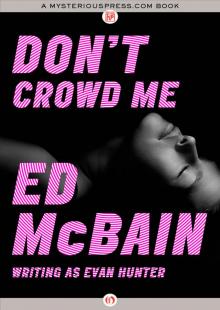 Don’t Crowd Me
Don’t Crowd Me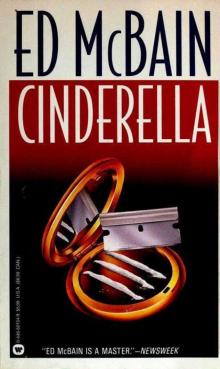 Cinderella
Cinderella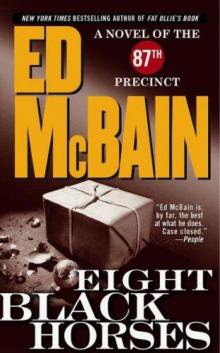 Eight Black Horses
Eight Black Horses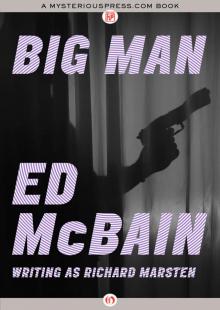 Big Man
Big Man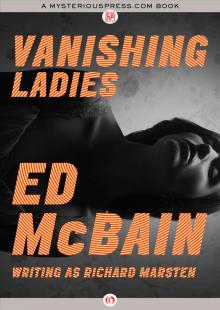 Vanishing Ladies
Vanishing Ladies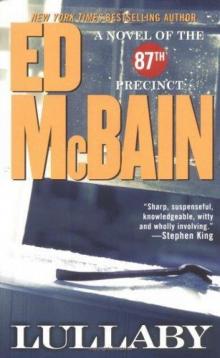 Lullaby
Lullaby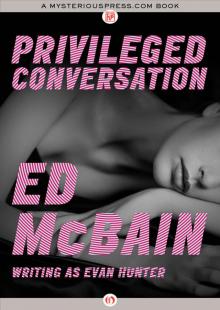 Privileged Conversation
Privileged Conversation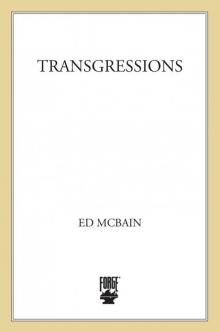 Transgressions, Volume 4
Transgressions, Volume 4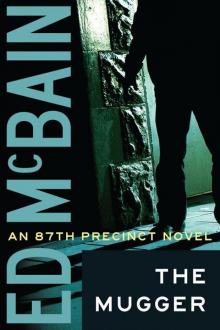 The Mugger
The Mugger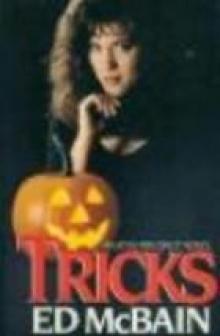 Tricks
Tricks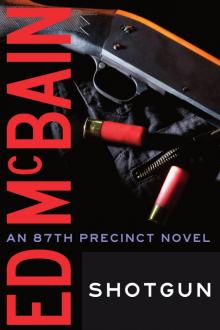 Shotgun (87th Precinct)
Shotgun (87th Precinct) Hail, Hail, the Gang's All Here!
Hail, Hail, the Gang's All Here!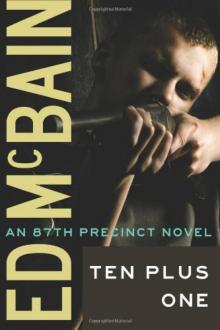 Ten Plus One
Ten Plus One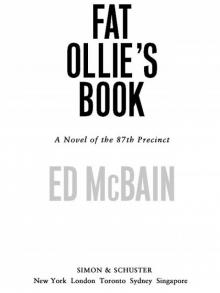 Fat Ollie's Book
Fat Ollie's Book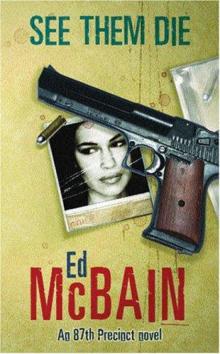 See Them Die
See Them Die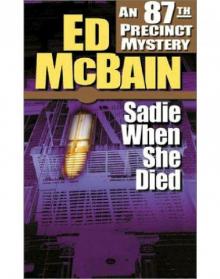 Sadie When She Died
Sadie When She Died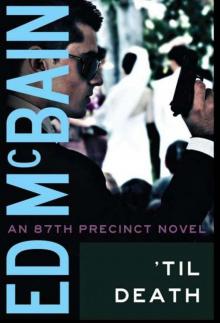 Til Death
Til Death Transgressions Vol. 3: Merely Hate/Walking the Line/Walking Around Money
Transgressions Vol. 3: Merely Hate/Walking the Line/Walking Around Money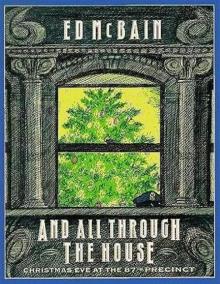 And All Through the House
And All Through the House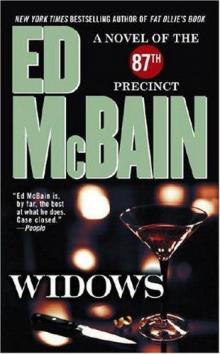 Widows
Widows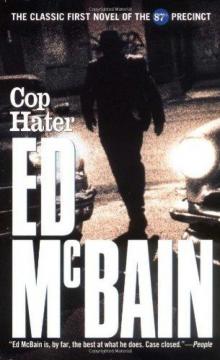 Cop Hater
Cop Hater Transgressions
Transgressions